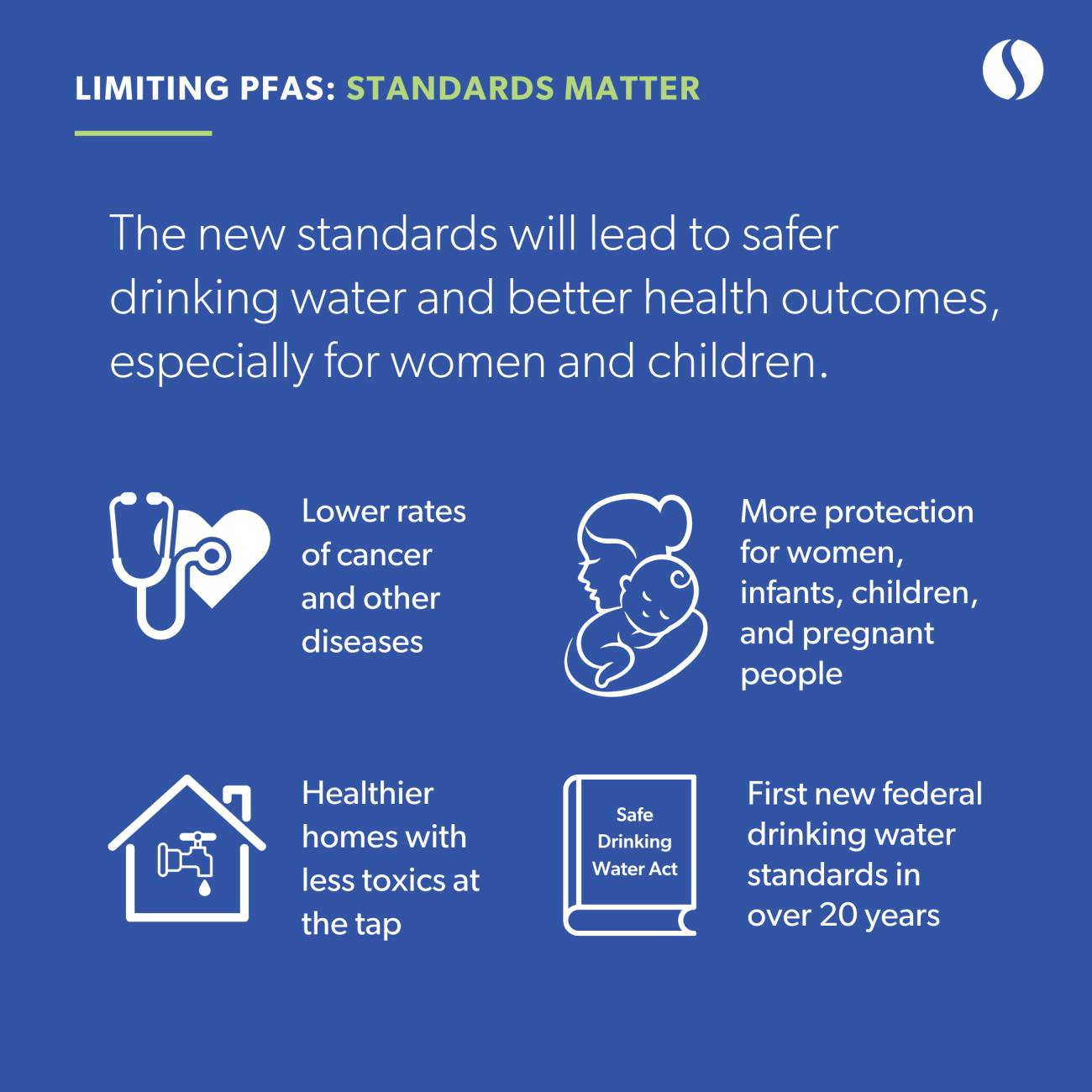EPA establishes limits on PFAS chemicals in U.S. drinking water supplies
 The U.S. Environmental Protection Agency (EPA) announced drinking water standards for six PFAS chemicals, marking the first time in more than 20 years the federal agency has set an enforceable limit on a new unregulated drinking water contaminant.
The U.S. Environmental Protection Agency (EPA) announced drinking water standards for six PFAS chemicals, marking the first time in more than 20 years the federal agency has set an enforceable limit on a new unregulated drinking water contaminant.
“This announcement is a major step toward protecting the public from these toxic chemicals that have contaminated drinking water supplies across the country, putting millions of people’s health at risk,” says Dr. Laurel Schaider, Senior Scientist at Silent Spring Institute.
The new standards apply to PFOA and PFOS—two of the most common PFAS—as well as PFNA, “GenX chemicals,” PFHxS, and PFBS. Levels of PFOA and PFOS in drinking water will not be allowed to exceed 4 parts per trillion (ppt) individually. PFNA, GenX, and PFHxS will not be allowed to exceed 10 ppt individually, and will also be regulated along with a fourth chemical, PFBS, based on a hazard index—a measure of the risks from exposures to multiple PFAS.
The standards will require public water systems to monitor for these chemicals. It will also require systems to notify the public and reduce PFAS contamination if levels exceed the standards. Based on available test results, EPA estimates that about 6 to 10 percent of public water systems will be required to take action to meet these new standards.
Schaider says the standards will not only have significant health benefits, including lowering rates of cancer and other harmful health effects associated with exposures to PFAS, but also they will ensure that vulnerable communities, including pregnant and breastfeeding women, as well as infants and children, are protected.
In June 2022, EPA issued a health advisory level 0.02 ppt for PFOS and 0.004 ppt for PFOA. Those levels were based on the best available science, which showed health effects at lower levels of exposure than previously thought. The new standards are higher to account in part for the fact that current detection methods are unable to measure PFAS at near-zero levels. As these methods improve and the science continues to evolve, Schaider hopes the new standards will be revised downward.
“It would also be good to see the standards expand in the future to include more PFAS,” she says. Although the decision to regulate 6 PFAS is a step toward addressing the chemicals as a class, there are currently more than 14,000 different types of PFAS. Therefore, future action will be needed to protect communities from other PFAS exposures, adds Schaider.
Silent Spring submitted comments to EPA in June 2023 in support of the proposed standards.
*Update: On April 19, EPA also designated PFOA and PFOS as hazardous substances under CERCLA, the Comprehensive Environmental Response, Compensation, and Liability Act, also known as Superfund. The designation will allow EPA to hold polluters accountable for contamination and help ensure they pay for the cost of clean up.
About PFAS: PFAS (per- and polyfluoroalkyl substances) are a class of chemicals that companies add to consumer products to make them nonstick, waterproof, and stain-resistant. They are found in carpets and upholstery, waterproof apparel, non-stick cookware, grease-proof food packaging, and even dental floss. They are also used in firefighting foams for putting out fuel fires. Studies have linked these chemicals with a range of health problems including thyroid disease, cancers, high cholesterol, obesity, and effects on the immune system.
What you can do:
- Explore resources on the PFAS Exchange
- Download Silent Spring’s Detox Me app for tips on reducing exposures to PFAS and other everyday chemicals
- Get help interpreting your drinking water test results with the PFAS Exchange Exposure Tool
- Connect with communities taking action to address PFAS pollution.
Watch the documentary The Poison In Us All by Bloomberg Investigates.
Learn about Silent Spring’s research on PFAS:
- Everyday exposures to PFAS chemicals
- CDC/ATSDR PFAS Health Study
- PFAS HOME Study
- PFAS-REACH
- STEEP Superfund Research Program Center
- Women Exposures at Work (Women Firefighters)
- Food packaging